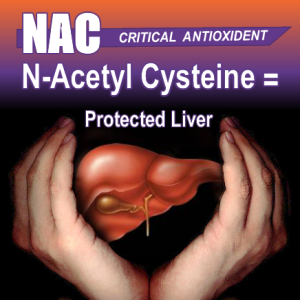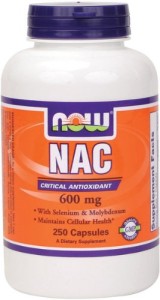
The location of the nine paired tender points that comprise the 1990 American College of Rheumatology criteria for fibromyalgia.
The first thing I think about when I hear the dreaded diagnosis is something one of my professors in pharmacy school used to talk about at least once a semester. A diagnosis is a definition and not disease. What he meant was the nomenclature associated with some type of bodily dysfunction is nothing more than a moniker and designation. It tells nothing about what is occurring in the body or how to address it; it simply names it.
Fibromyalgia is the Latin term for “muscle fiber pain”. That means when you go to your doctor complaining of muscle pain and you leave with a diagnosis of fibromyalgia, what your medical guru is basically doing is taking your complaint, translating it to a medieval dialect, giving you a pain medication or maybe an anti-depressant (!) and then billing you. This is a textbook example of how the medical model works. It can’t do anything real, but it can officiate your symptomology by sanctifying it with a Latin moniker.
It reminds me of the Wizard of Oz. As you’ll recall at the end of the flick, the scarecrow, with a head filled with nothing but straw, travels far and wide to find the magical wizard (doctor) who, it was said, could miraculously create for him a brain. As it turns out however, the wizard (doctor) is nothing but a fraud, and while he can’t deliver him any gray matter, he can give him something that, where he comes from, re-presents a brain. A diploma! In other words instead of giving his patient anything real, he gives him a piece of paper that supposedly symbolizes something real. Sounds a lot like the medical model to me!
So what to do if you are dealing with muscle fiber pain i.e. fibromyalgia? Well, as turns out you can actually do a lot. That’s because fibromyalgia represents toxicity, specifically blood toxicity. In 1990, Dr. John Couvaras, a fertility physician from Phoenix, discovered that women given an injection of the blood thinner heparin to improve circulatory problems associated with infertility reported that their fibromyalgia symptoms were dramatically reduced. He subsequently developed the “Hypercoagulation Theory of Fibromyalgia” that postulated that sticky, coagulated blood, following toxicity, results in the deposition of clotting proteins and other poisons in the muscle that eventually results in the classic pain syndrome associated with fibromyalgia. And where does that toxicity come from in the first place? Typically, the liver and the ultimately the small intestine. Here’s what happens:
The small intestine is the home of the “microbiome”, trillions of bacterial cells made up of many hundreds of strains. The numbers and types and exact proportions of these bacterial strains are tightly regulated. If there are long standing digestive health issues, especially in the processing of fats, over time these proportions get thrown off and the wrong types of bacterial strains can proliferate. Medical folks call this “dysbiosis” or “SIBO” (Small Intestine Bacterial Overgrowth). Because these bacteria are constantly secreting waste material, eventually the body will mount an immune (defensive) response and an inflammatory reaction will ensue. As this progresses eventually the blood can become contaminated. And the major blood response to this kind of contamination is clotting.
To compound the problem the healthy microbiome is involved in estrogen metabolism. When dysbiosis occurs, estrogen is not broken down correctly and toxic byproducts can build up. Usually the liver can handle these byproducts, but under conditions of long term bacterial and estrogenic toxicity, this critical detox organ can become overload and even more poisons can enter into the blood. Thus fibromyalgia should be regarded as the final result of estrogenic and digestive system toxicity following long term dysbiosis.
So if you are dealing with the pain and misery of fibromyalgia here’s what you want to do: First of all correct digestive problems. Look for problem foods i.e. foods that cause any digestive distress (heartburn bloating cramps, loose stools, constipation etc.) and eliminate them. Get on a good probiotic supplement (I like Youngevity’s BioLumin Nightly Essence) and eat lots of fermented foods like sauerkraut, miso, tempeh, kim chee and fermented beets. You can make your own fermented veggies pretty easily, basically by mashing or cutting up veggies and adding some bacterial starter and salt. And use a good probiotic supplement on a regular basis and make sure you use a product that has multiple bacterial strains. Use digestive enzymes and apple cider vinegar after all meals, especially ones that contain lots of fat. And, taking digestive enzymes on an empty stomach can have blood thinning effects that can improve fibromyalgia symptoms. Practice calorie restriction (eating less) and take a food holiday (fast) once a week or so. Use essential fatty acid supplements which can support estrogen metabolism. Consider estrogen balancing supplements like Vitamin A (20,000 iu a day), Vitamin E (400 iu a day) and pregnenolone (100mg a day). And applying a progesterone cream 5-7 days a week cream can be helpful too.
10 other interesting supplements that may help improve fibromyalgia symptoms:
Melatonin-4-6 mg at bedtime
Theanine-100-500mg daily
Magnesium Glycinate-2000mg daily
Vitamin C -1000-5000mg daily
N-Acetyl Cysteine- 500mg daily
Vitamin E-(mixed tocopherols) – 400 iu daily
Selenium-200-400mcgdaily
Cetyl Myristoleate -100-500mg daily
Malic Acid – 1000mg a day
Sam-E – 100-200mg daily


 It can also improve lung function folks who are dealing bronchitis or emphysema or tuberculosis. And, it’s available in intravenous form as a medication called “Acetadote” which is used as an antidote Tylenol liver poisoning. According to an article published in the Cleveland Clinic Journal of Medicine, Tylenol or acetaminophen (which is the generic name for Tylenol) poisoning is the leading cause of acute liver failure in the United States, with nearly half of acetaminophen poisoning cases due to
It can also improve lung function folks who are dealing bronchitis or emphysema or tuberculosis. And, it’s available in intravenous form as a medication called “Acetadote” which is used as an antidote Tylenol liver poisoning. According to an article published in the Cleveland Clinic Journal of Medicine, Tylenol or acetaminophen (which is the generic name for Tylenol) poisoning is the leading cause of acute liver failure in the United States, with nearly half of acetaminophen poisoning cases due to 








